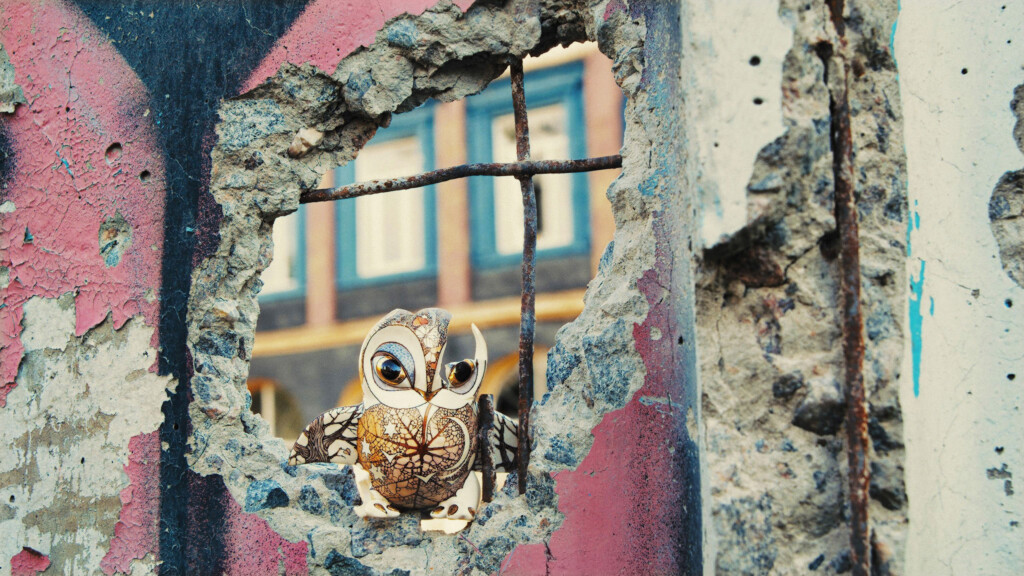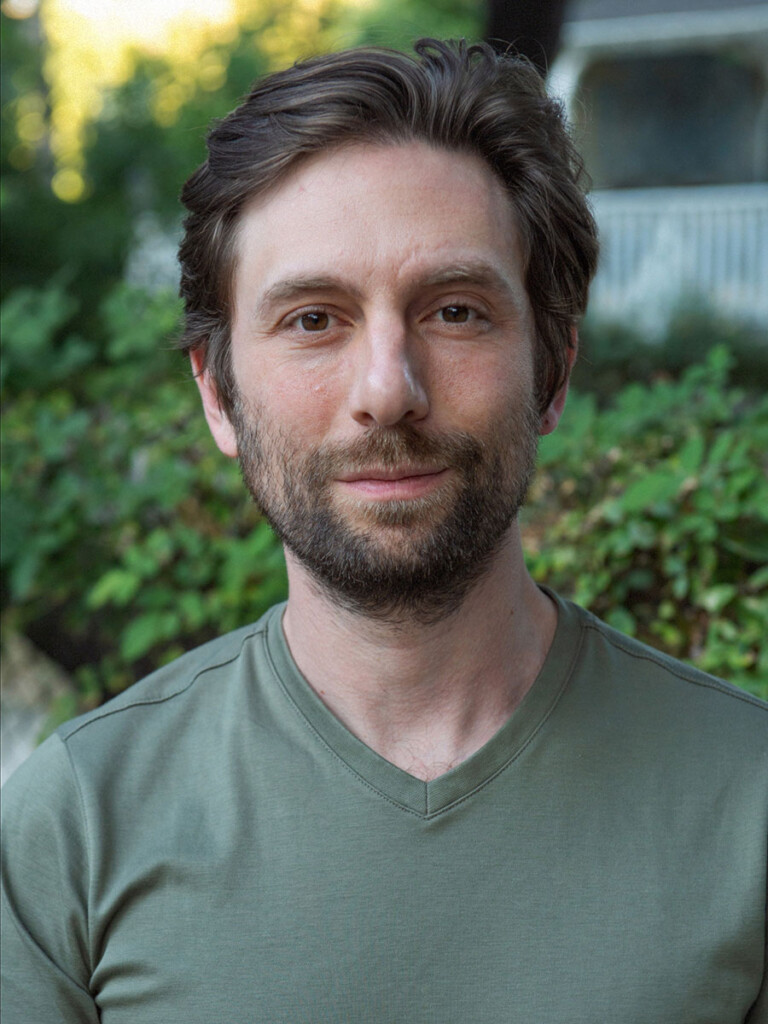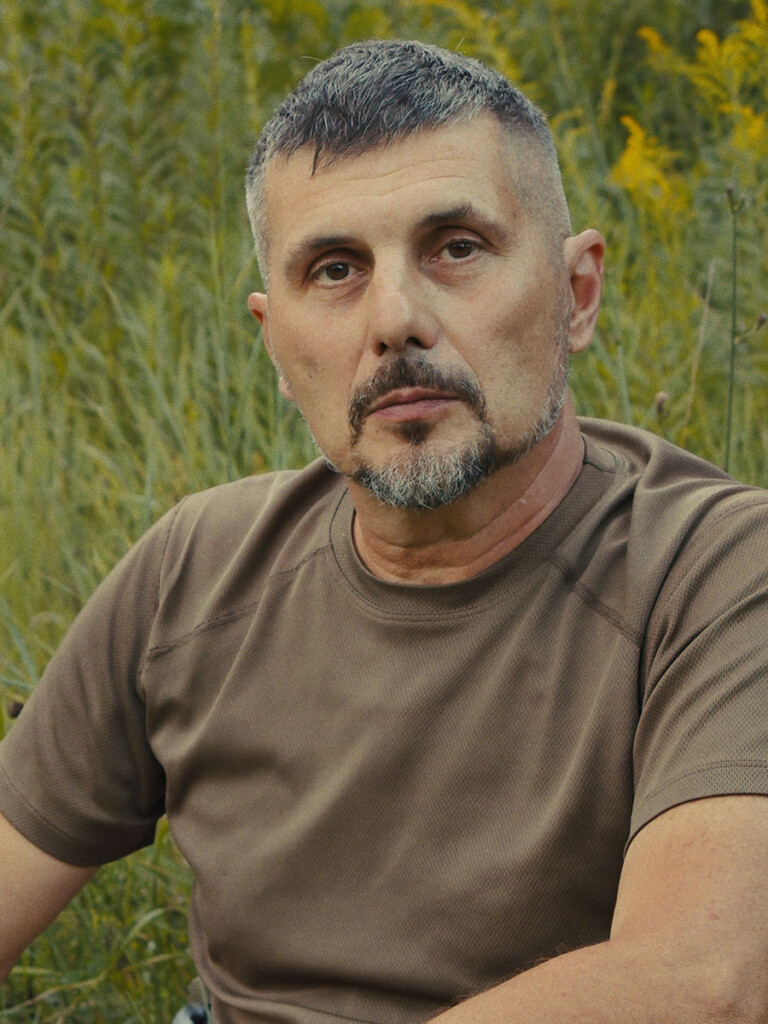A title card in the opening of Porcelain War reads: “Nearly all the footage you are about to watch was shot by the subjects in this film.” This film is extraordinary not only for its thematic structure and cinematography that offers a unique perspective on what the gravity of relentless combat entails but also for its ingenious synchronization of production logistics, defying the thousands of miles separating the subjects and creative production team.
The three main subjects are artists Slava Leontyev, Anya Stasenko and Andrey Stefanov, who also have joined the combat forces in Ukraine, where the war with Russia is about to enter its third year. Directed by Brendan Bellomo and Leontyev, with Stefanov as cinematographer, Porcelain War anchors a new category of war documentary filmmaking that evokes humanistic empathy in a truly fresh frame of storytelling.
The winner of the Grand Jury Prize in the U.S. Documentary Competition at the 2024 Sundance Film Festival, Porcelain War epitomizes the possibilities of breaking ground in independent cinema that defies logistical barriers, even as they entail the most serious risks imaginable for any filmmaker. Incidentally, the film received a fiscal sponsorship from the Utah Film Center.

Before the war started in 2022, all of the principals had envisioned a short film, which would include animated elements to highlight their Ukrainian art. Bellomo’s creative partner, Aniela Sidorska, had discovered the porcelain figurines which Stasenko and Leontyev were making. “We just fell in love with them, we became friends and we were talking about doing a project together and connecting creatively,” Bellomo said in an interview with The Utah Review, which also was joined by Leontyev and a translator. “When Russia invaded, we called up to find out if they were okay, if they were staying in the country, and what was happening.”
At that time, Leontyev told Bellomo said they were not only staying but they were continuing to make art at night. Meanwhile, he had joined a special forces unit as a combatant and was training civilians to take up arms and fight. Bellomo sent 15 cameras to Leontyev, who also recruited his best friend, Andrey Stefanov, an oil painter, who became the cinematographer. Bellomo found the footage they sent back remarkable.
Bellomo drew a parallel in the experience of making the film to the Apollo 13 moon mission in 1970. In the second day of the flight, an oxygen tank ruptured in the main service module and disabled all of the essential electrical and life support systems for the three astronauts. With the moon landing scrapped, the astronauts relied on whatever support services they could use from the lunar module in order to return to Earth, guided by the NASA crew on the ground hundreds of thousands of miles away.

In this instance, Bellomo and his Ukrainian friends, now filmmaking colleagues, were 6,000 miles apart from each other. “Anya [Stasenko] was saying, during the war, when we connected, she was feeling like she was on the moon or in outer space.” He added, “it reminded me of Apollo 13, when the astronauts were stranded in their spaceship and they had all these problems but on the ground they had a duplicate of every single piece of equipment at NASA. For every camera and every microphone I sent to Slava and Andrey, I had a duplicate of it here in the U.S. Using these, we would hold the same objects in our hands to figure out how to tell the story together.”
In the interview, Leontyev said that he initially wondered if this could be accomplished. “But this collaboration with Brendan was one of the best experiences of my life,” he added. “Even though we had this language barrier and we never met each other, from the very start, we had the common language to express our thoughts. We were communicating this universal language of art.” Suddenly, the 6,000-mile gap disappeared in the creative process.
The war footage in the film is unique in its presentation for a film based in a contemporary theater of combat, a profound contrast to what a journalist embedded in the conflict zone might capture for a documentary. Land mines are a grave danger, with one report indicating that Ukraine has more active land mines than any other nation on the planet.
Rather than film of the missile strikes, the footage documented what the impact of those strikes might produce. “We didn’t want to film just the ruins but to film the beauty of what could be ruined,” Leontyev said. “For example, we would film the beauty of the nature surrounding us and with every piece of nature we knew that it might not exist tomorrow.” The film is marked extensively by painterly scenes of sunny meadows and fields of wildflowers as well as by the visuals of intricate porcelain art objects. Stasenko’s paintings are shown with just as intricately produced layers of animation, which serve a foreshadowing purpose in the thematic narrative.
“As an artist, I am not interested in documenting evil or paying attention to it but rather to people who resist evil,” Leontyev explained. “I am interested in the beauty of these people, their bravery.”

Bellomo augmented his Ukrainian colleague’s sentiments. “The incredible thing about the relationship between resistance in a military sense and resistance in an artistic sense in this film is that there is a symbiosis here. As Anya and Slava create porcelain figurines, they are painted with stories of what their life was like before the war, their experiences during this conflict, and the hopes for a peaceful future.”
He added, “But they’re only able to create these because, as Anya says, there’s someone holding an umbrella over them, protecting them. When Slava is picking up a camera, Anya picks up a paintbrush; they’re picking up a weapon, risking their lives so that this art can be created. Yet, Anya says, in the most vile moments of the war, people needed just to smile, even if only once, to remember that there’s good in the world.” The figurines serve a vital purpose for reinforcing the morale of the Ukrainian soldiers, by uniting artists and civilians in the mission.
Bellomo noted that the filming and editing for Porcelain War occurred simultaneously, as it encompassed collecting more than 500 hours of footage and thousands of pages of translated transcripts. “It was an incredible opportunity for all of us as storytellers because it meant the movie was the most up-to-date story of their lives and of their art,” he added.
“From the beginning, we wanted the audience to get to know Anya, Slava and Andrey as if they were having tea together or they were having a coffee,” he explained. Knowing that this was a unique opportunity to achieve the goal of bringing the truth in its purest form to the documentary screen, Bellomo decided that he and Aniela [his creative partner] wouldn’t go to Ukraine or send a crew because of what the artists had already accomplished. He also have given them a crash course in filmmaking in the early phases of the project.
Bellomo recalled how their regular Zoom sessions had bonded their respective fates together. “Slava would text me and say there was a missile strike, or we can’t upload footage, we have no power,” he explained, “and I would be up all night, worrying and taking on their stress. In this way, we were getting to know each other through photos, videos or just hearing each other’s voice.” This conscientious emphasis on these communication dynamics translated seamlessly to the film the viewers are encountering. Even if one has stayed neutral or has felt indifferent about the war, especially as it has been prolonged, Porcelain War rejuvenates the empathetic connection one could have for individuals whose daily lives are bound up with the high probabilities of relentless violence.
Likewise, Leontyev said that despite the vast distances, he and his colleagues and friends have directly felt Bellomo’s concentrated energies and the symbiotic sensations of empathy. In particular, he mentioned Stefanov, the cinematographer and oil painter. “When the war started, he felt he could not paint anymore, not because he didn’t have time but because he did not have the energy. He felt that he had nothing to say at this point through his art,” he explained. “After the film ended, Andrey started painting again and his paintings have reached a new level of intensity. I’ve never seen him paint like this before.”
Bellomo hopes that audience members will take the film to heart and consider how they might help Ukrainians. One way is to contact elected Congressional representatives and to ask questions and engage them in dialogue during this year’s national elections.
Viewers also can check out links to various nonprofits and NGOs at the Porcelain War website to donate or connect.
For more information about the festival films and tickets, see the Sundance Film Festival website.
